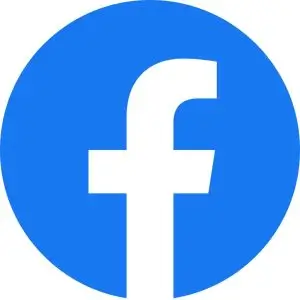If you’ve been following my blog, you may have seen my previous post where I explained the difference between a Facebook Page and Professional Mode. In today’s post, we’ll explore why your Facebook posts often don’t get many likes, comments, or reactions.
According to Alex Ifeanyi, a digital technology tutor, many social media users find it hard to get reactions on their posts. He explains this using Facebook as a case study. Understanding this can help creators, businesses, and influencers improve post visibility and engagement.
“Why a few people comment and like your Facebook posts even when you have up to 10,000 followers and friends (Updated)”
Common Mistakes on Facebook
Many people delete friends in the name of “they are monitoring spirits.” However, most of these friends never saw your post for over a month. Check your friend list: you may have 5,000 friends, but how many of their posts do you actually see in a week? This shows the limited organic visibility that exists on Facebook.
The Core Problem: Limited Reach
The official number of friends and followers that could see your post, as programmed by Facebook, is:
- 16% outside the organic reach if you have fewer than 10,000 followers
- 12% if you have fewer than 100,000 followers
- 8% if you have over 100,000 followers
Organic reach refers to those who see your posts naturally, from friends who share your content, or from followers who regularly interact with your profile.
How Many People Actually See Your Posts?
- If you have 1,000 friends and followers → only 160 may see your post
- If you have 5,000 friends and followers → only 800 may see your post
- If you have 100,000 friends and followers → only 8,000 may see your post
Facebook shows your post to the allowed number of followers within the first 2 hours. After this period, your post gradually loses visibility in news feeds, unless it generates high engagement. This means timing and content quality are critical for maximizing reach.
Engagement is Key to Visibility
After five hours, posts are usually gone from most users’ feeds unless they are highly engaging. Engagement includes reactions, shares, comments, and clicks. Each interaction keeps the post visible for 30 seconds to 1 minute. Posts that continue to receive engagement maintain relevance, which further boosts visibility and reach.
Understanding your audience is vital. Monitor the times when your followers are most active online, and schedule posts accordingly. Using analytics tools provided by Facebook or third-party apps can help identify peak hours for posting and engagement.
Creating Content That Gets Reactions
To increase reactions and comments, focus on quality content. High-quality posts include:
- Visually appealing images or videos
- Clear and compelling captions
- Posts that encourage discussion or questions
- Timely and trending topics relevant to your audience
- Content that solves a problem or provides value
Using Facebook features like polls, quizzes, and stories can also enhance engagement. Tagging friends or relevant pages and sharing posts in niche groups increases reach. Consistency is key; regularly posting content and analyzing performance ensures that you understand what resonates with your audience.
Calculating Likely Engagement
You can estimate the number of friends or followers likely to react or comment based on who is online within the first 5 hours of your post. Timing your posts to match peak activity hours increases the chance of higher engagement.
Encouraging followers to interact by asking questions or requesting feedback increases engagement rates. Posts with higher engagement are more likely to appear in the news feed of additional users, creating a snowball effect that improves visibility even further.
Case Study: Facebook’s Founder
Even Mark Zuckerberg, the owner of Facebook, has 116.5 million followers, yet his posts rarely receive more than 5,000,000 comments. This demonstrates that reach and engagement are not solely dependent on the number of followers, but also on timing, content quality, and organic visibility limits imposed by Facebook.
Alex Ifeanyi emphasizes that understanding Facebook’s algorithm and follower behavior is crucial. Creators who focus on audience insights, post timing, and interactive content are more likely to maximize visibility and reactions.
Recommended Posts
Conclusion
Facebook’s organic reach is limited, and not all followers will see every post. Timing, content quality, and engagement strategies are essential for improving visibility. By understanding these factors, creators, businesses, and influencers can optimize their posts to get more reactions, comments, and shares.
@Alex Ifeanyi Oguta JP.

Facebook Post Engagement
